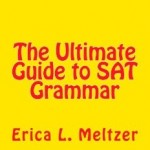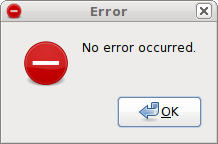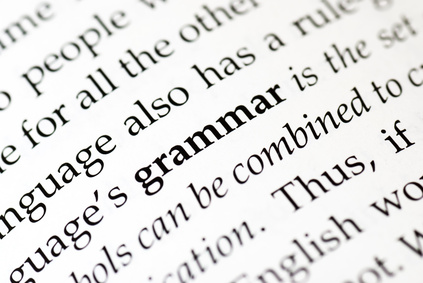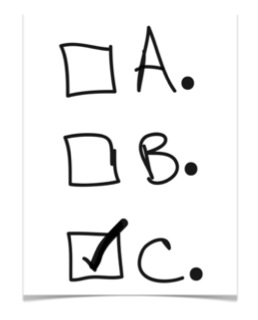This post is an excerpt from my awesome book, The Top 12 SAT Writing Grammar Rules. Get your copy today!
Let me put this in the bluntest manner possible: I always use this upcoming SAT Writing tip on every grammar question in the SAT Writing multiple-choice section.
I also can get a perfect score on the SAT Writing section, every single time. There is most definitely a connection here.
Here’s my surprising claim: I propose that most of the sentences in the SAT writing section are based on a very basic, very simple grammar structure, and that you can learn to see it for yourself.
“Wait, wait!” I can hear you saying. “I saw some really messed-up sentences the last time I looked at the SAT grammar. I don’t believe you.”
Ok, it’s true that the sentences look bad.
Specifically, they look overly complicated. Too many words. Too many details clouding the air.
All the choices sound wrong, or maybe they all sound right.
That’s because the SAT’s Number 1 method of making grammar questions more difficult is by distracting you with details.
Get Exclusive SAT Prep Tips!
I want to send you more tips to help your SAT score, but I need your email address to stay in touch. Enter your email below so I can send you my reports on the SAT and other subscriber-only bonuses.
These details blind your eyes, trip up your “inner ear,” and fog (and flog) your mind.
Luckily, now that you know this, you’ll be able to untie many of the knots that the SAT has tied for you.
A simple sentence might look like this: “Robert read a book.”
The SAT needs this sentence to fill a couple of lines, so it has plenty of room to add extra, complicating details to this simple sentence.
First, they might add info and tell us a little more about Robert as a sort of “side note”:
“Robert, who was my roommate, read a book.”
Then they might tell us more about where Robert was reading the book:
“Robert, who was my roommate, read a book at the wooden picnic table.”
Then, they might tell us more about how Robert was reading the book:
“Robert, who was my roommate, read a book with his feet up and his easy chair reclined at the wooden picnic table.”
Everything I’ve added, step by step, has been unnecessary detail and can be removed again, piece by piece, to return the sentence to its original, uncomplicated basics.
NOW – visualize the uses this tip could have on the SAT Writing section:
What if our original sentence, “Robert read a book,” actually had an error in it – like: “Robert reading a book”?
It’s easy to spot the error when there are no details complicating matters. That’s good.
BUT – what if that same error was buried deep inside the extra-complicated version of the same sentence? Would you still notice the error?
Here’s that sentence:
“Robert, who was my roommate, reading a book with his feet up and his easy chair reclined at the wooden picnic table.”
Certainly, some of you will catch this error. But just as certainly, many of you will not, once it has been buried in a long-winded sentence.
Besides, even if you caught this one error instinctively, how are you going to guarantee that you catch the error every single time – even on other grammar topics that come less naturally to you?
Can you see why I would use this SAT Writing strategy and eliminate details on every single grammar question on the SAT?
If you agree on the usefulness of applying this tip to every SAT Writing question, pick up a copy of my book, The Top 12 SAT Writing Grammar Rules, which has many more SAT grammar tips and writing practice problems!
Further Reading:
Introduction to the SAT Writing Multiple-Choice Section
SAT Writing Tips: The Rearranging Word Order Strategy
SAT Writing Topics: What is on the SAT Writing Section?
Why is Grammar Important?
Additional Resources:
SAT Grammar Crammer: The Top 12 SAT Writing Grammar Rules (e-Book)
Hey, wait! Before you leave, have you joined my SAT prep mailing list and downloaded the free exclusive score-raising content that I sent ONLY to subscribers? Be sure to join today!


















Find Me on Social Media